London cemeteries
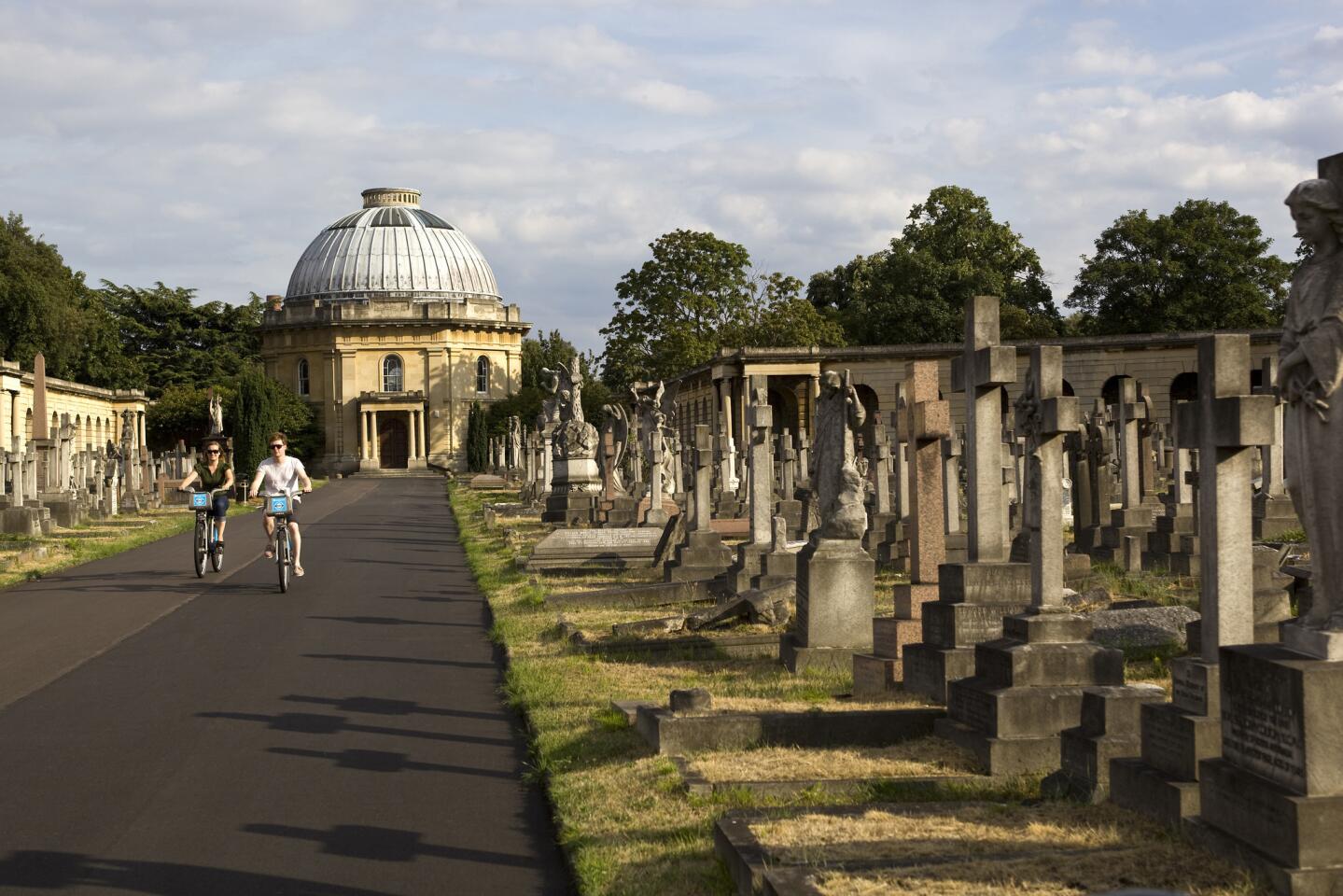
Brompton Cemetery, the most central of London’s “Magnificent Seven” graveyards. Because of its rich history, London is one of the best cities for touring cemeteries. It’s a through-the-looking-glass way of understanding a place and how it grew. (Neil Setchfield / Getty Images / Lonely Planet Image)
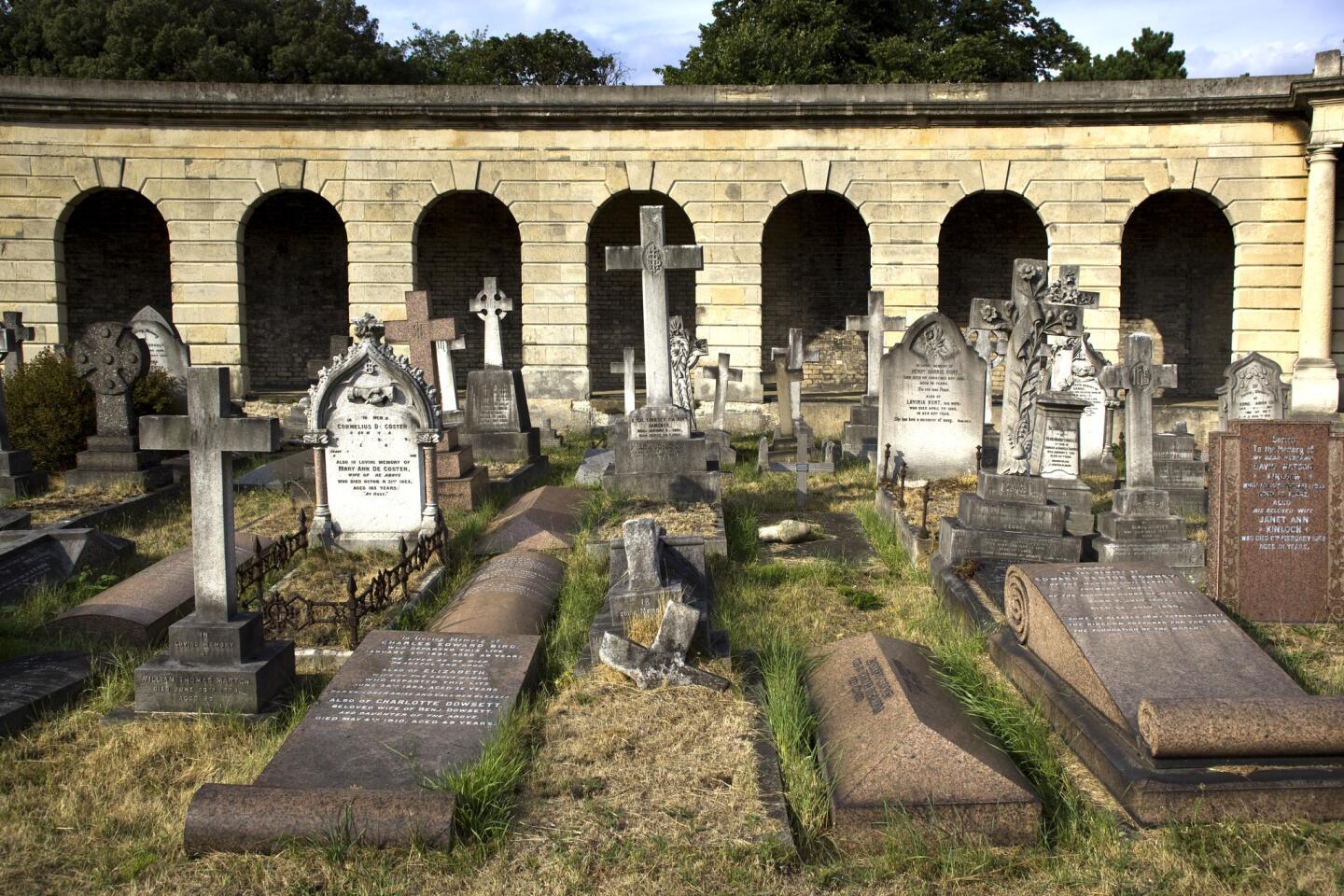
Brompton Cemetery is an acre of quiet in the middle of bustling London. (Neil Setchfield / Getty Images/Lonely Planet Image)
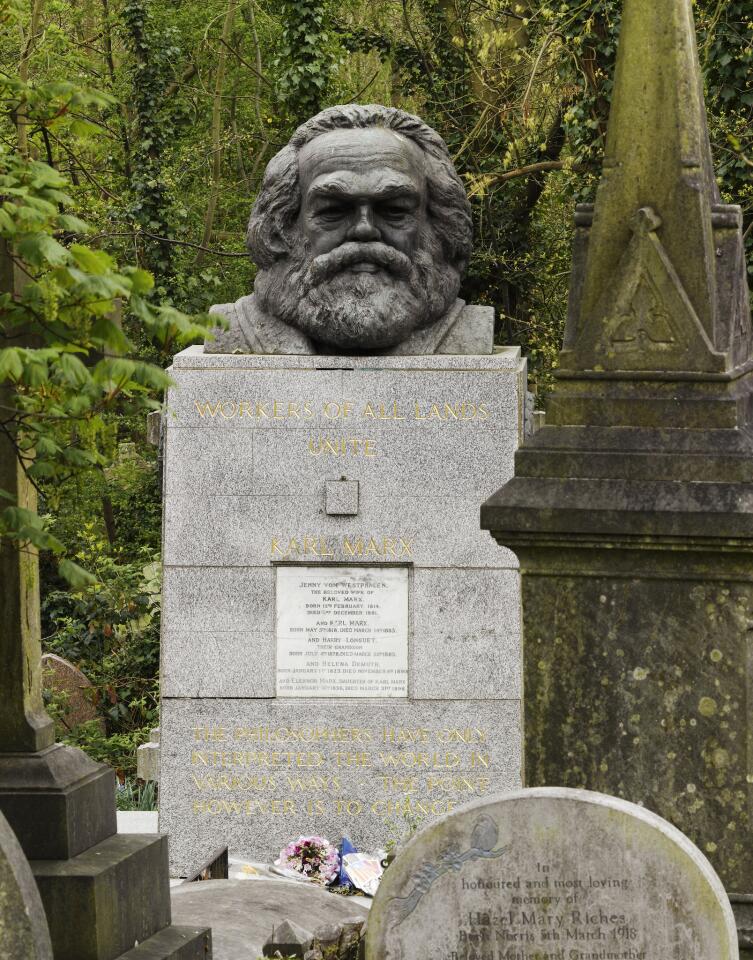
A bust of Karl Marx marks the grave of the revolutionary socialist in London’s Highgate Cemetery, which is in all the tour guides for the city. (View Pictures / UIG via Getty Images)
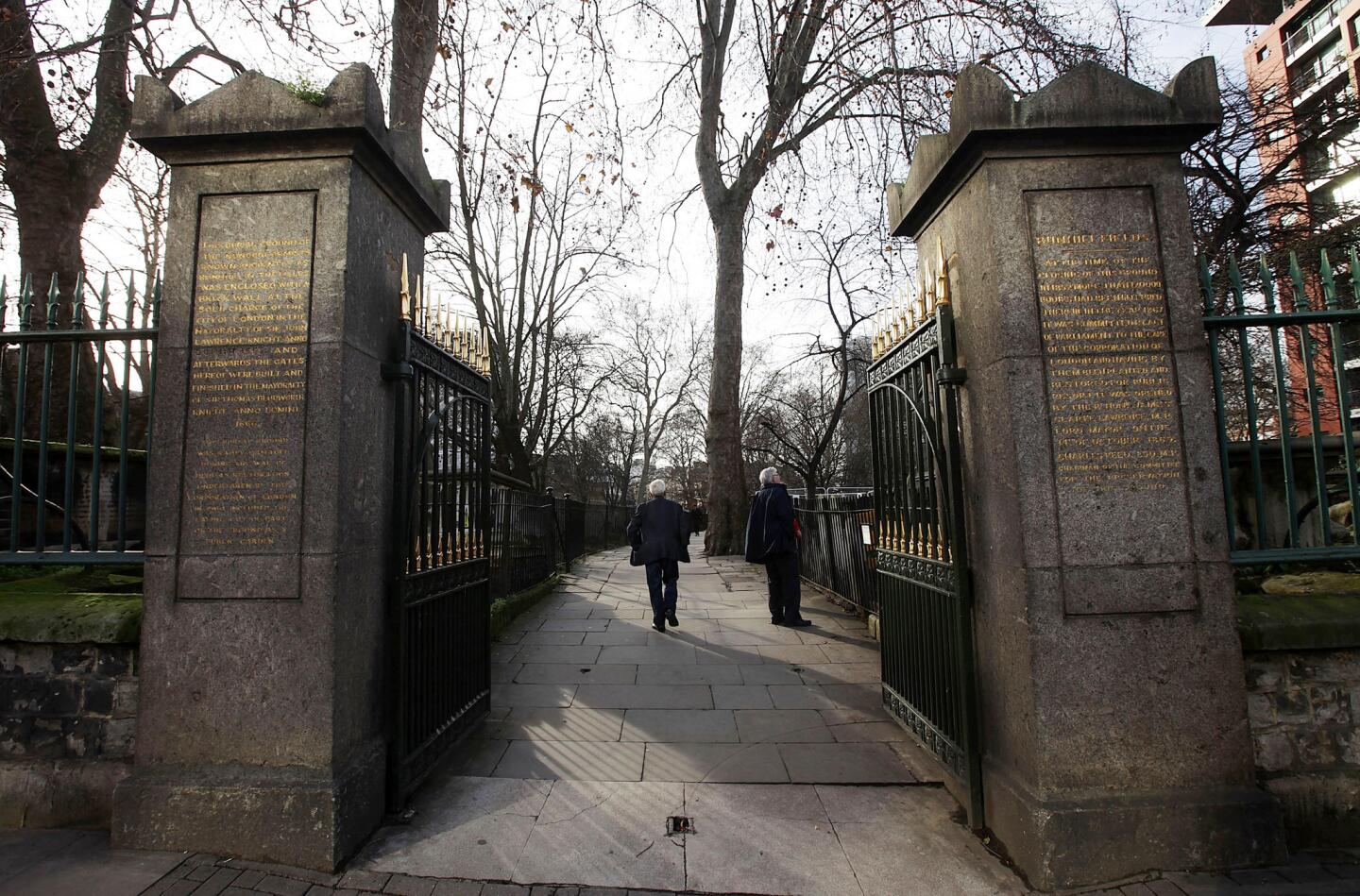
The entrance to Bunhill Fields, close to the City, as London’s financial center is called. The name probably comes from the Saxon meaning Bone Hill, although officially this cemetery dates from the 1660s, a time of plague in London. (Matthew Lloyd / Getty Images)
Advertisement
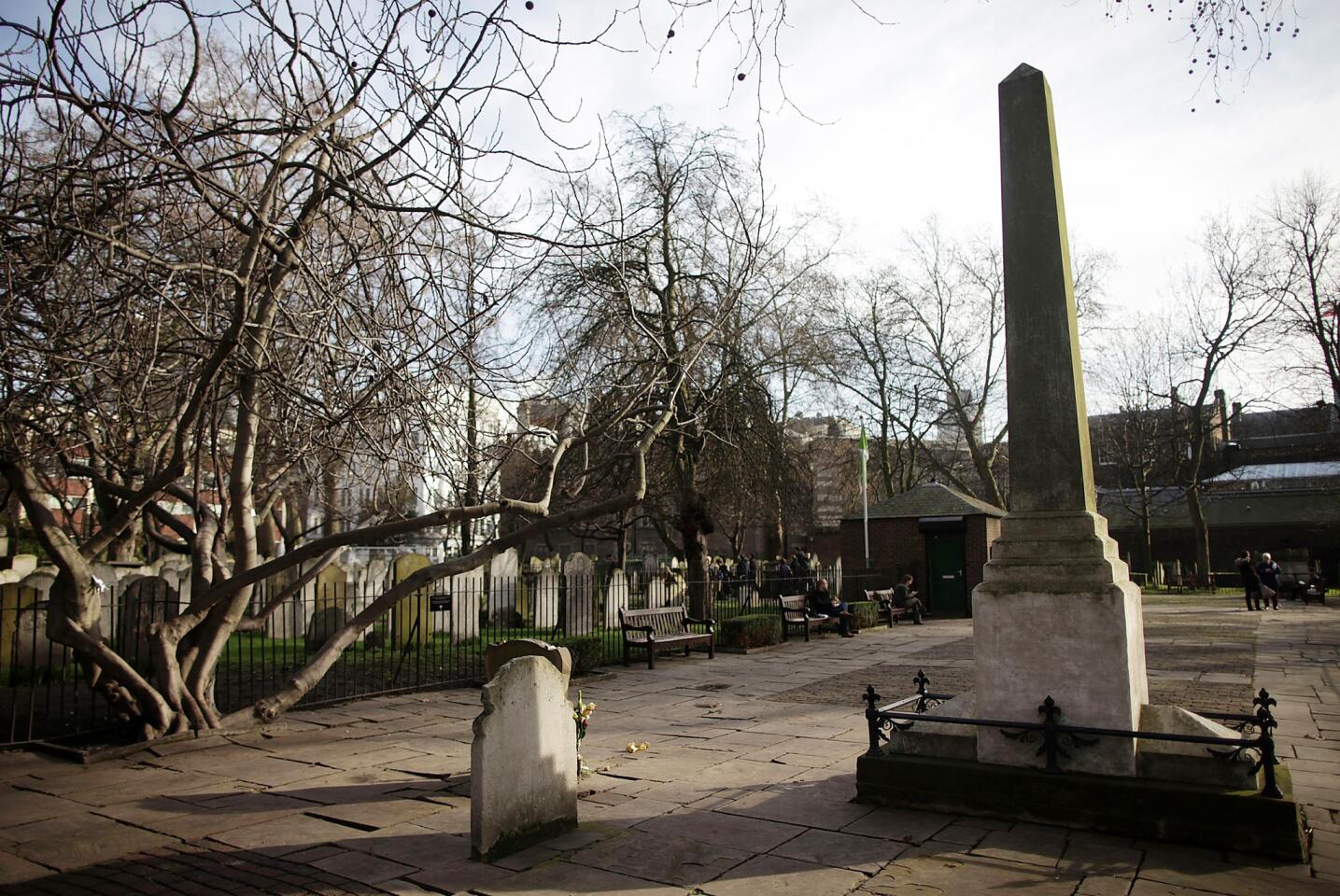
At Bunhill Fields cemetery in London, an obelisk memorializes Daniel Defoe, author of “Robinson Crusoe,” among other books. (Matthew Lloyd / Getty Images)
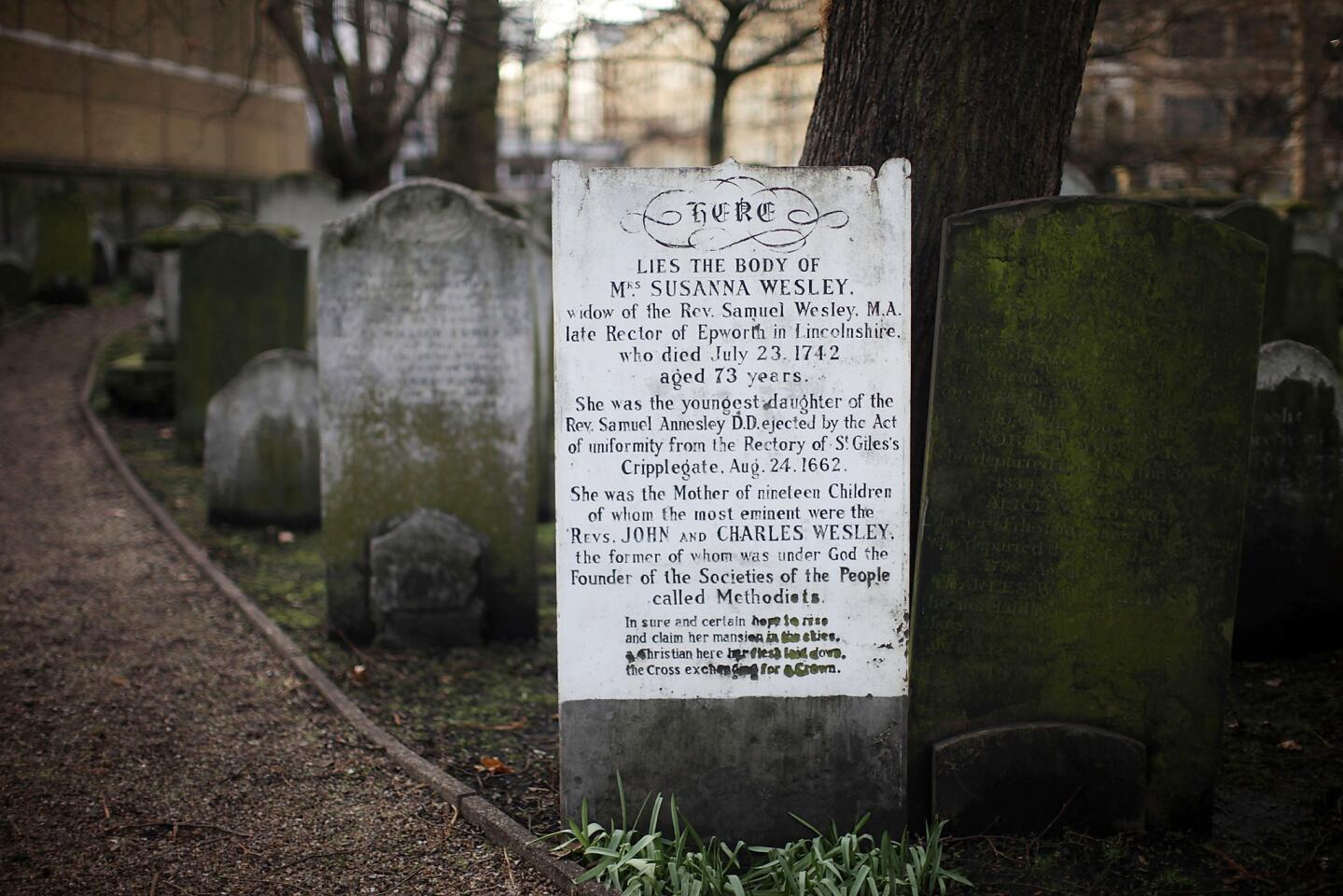
The headstone for Susanna Wesley, the mother of John Wesley, the founder of Methodism. She’s buried in London’s Bunhill Fields cemetery. (Matthew Lloyd / Getty Images)
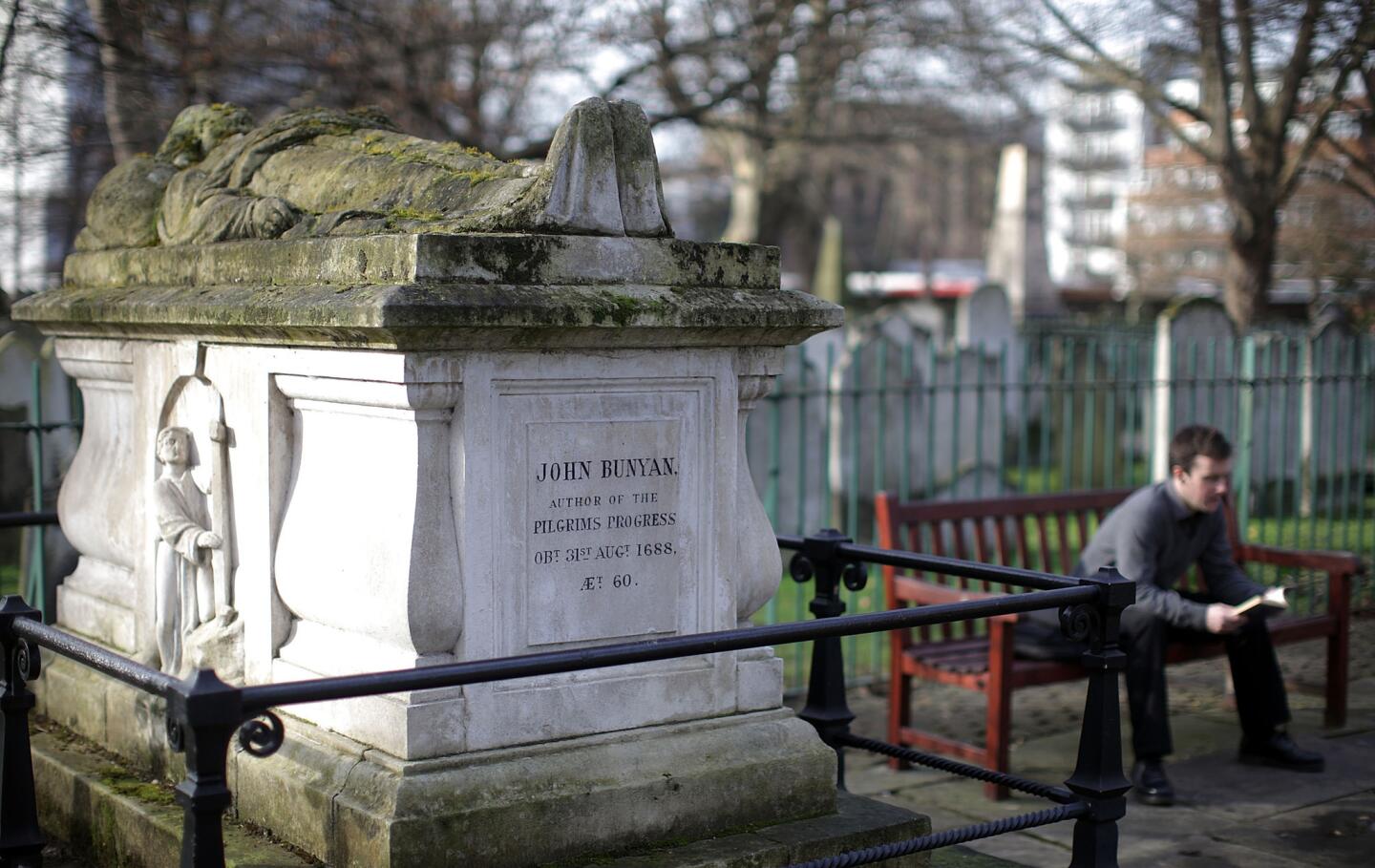
John Bunyan of “The Pilgrim’s Progress” lies on top of his high sarcophagus staring up to heaven at Bunhill Fields cemetery in London. (Matthew Lloyd / Getty Images)
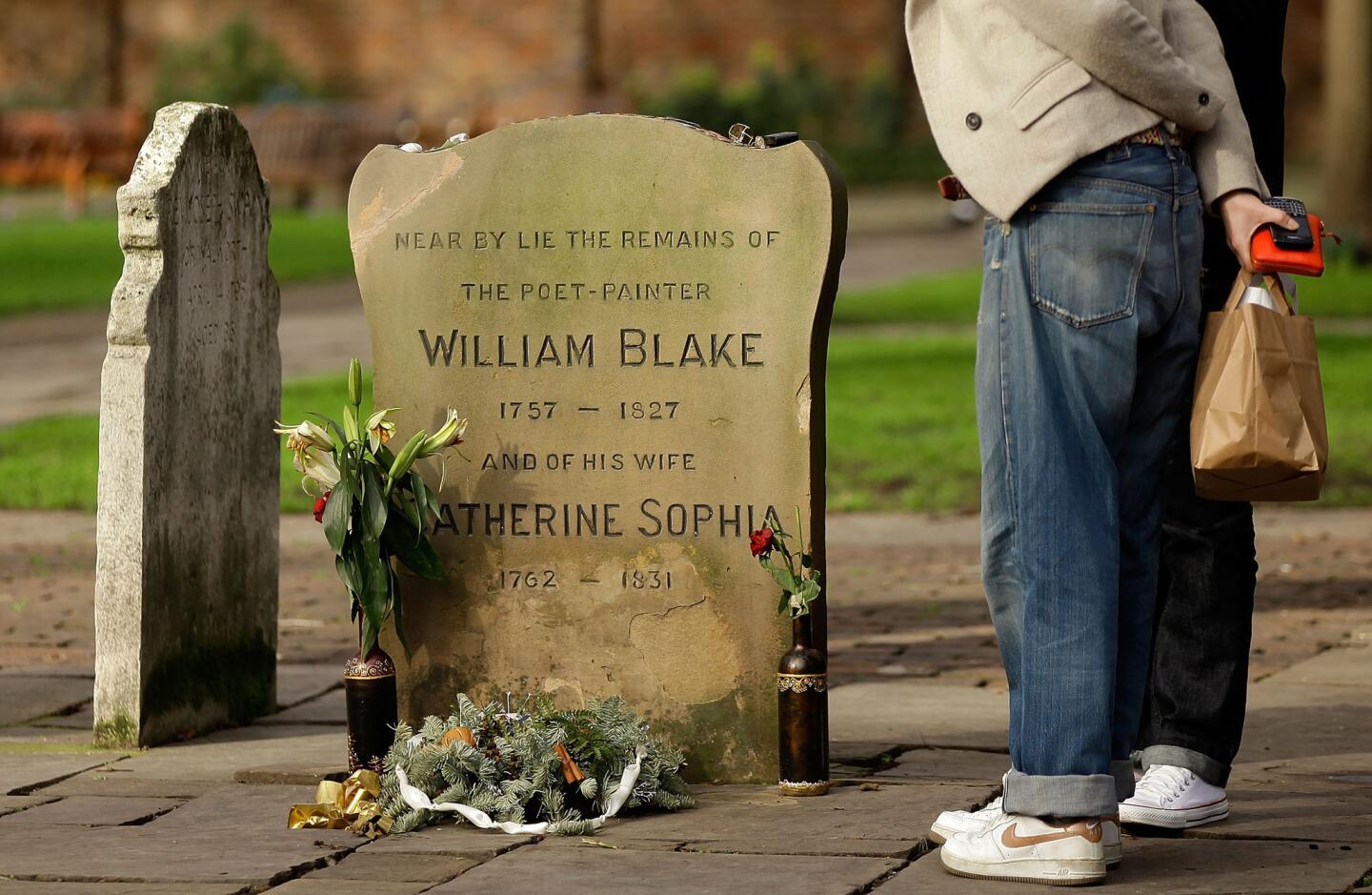
William Blake and his wife, Catherine Sophia, are memorialized on a single headstone at London’s Bunhill Fields cemetery. (Matthew Lloyd / Getty Images)
Advertisement
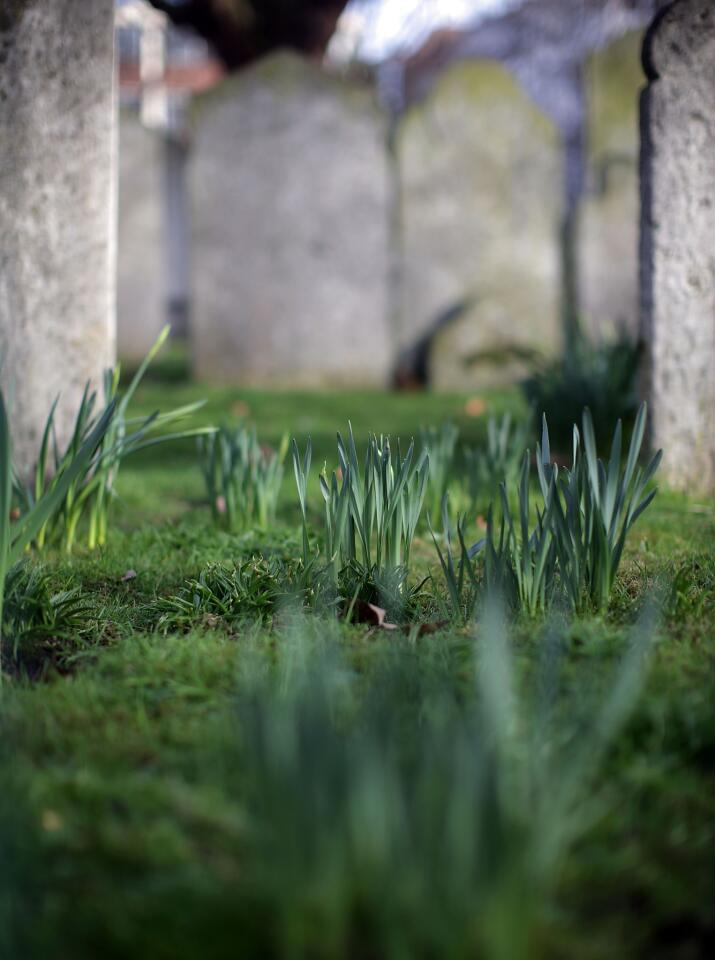
Daffodils surround graves and tombstones in London’s Bunhill Fields cemetery. (Matthew Lloyd / Getty Images)



